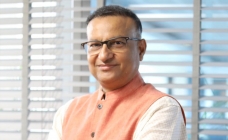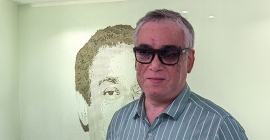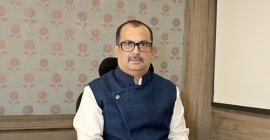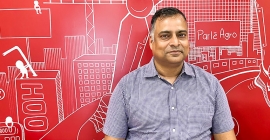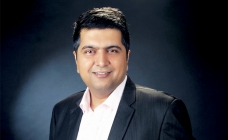‘Tech-tonic shifts altering Indian OOH terrain’
The Indian OOH landscape is replete with tech-driven growth catalysts; the moot point is, how the different constituents collaborate with one another to leverage the technologies for industry growth, writes OOH Business Strategist Rachana Lokhande
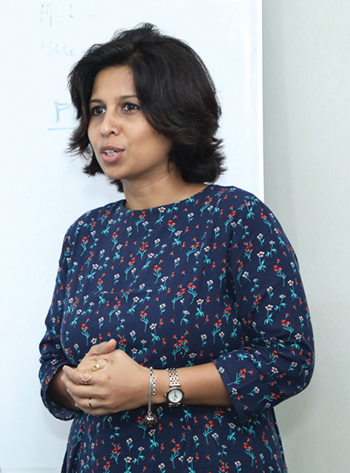 In the beginning of 2020, there were media articles about people who would be the game changers for their respective industries. But the real game changer for all our environment has been the Covid-19 pandemic.
In the beginning of 2020, there were media articles about people who would be the game changers for their respective industries. But the real game changer for all our environment has been the Covid-19 pandemic.
Nearly all businesses have been impacted one way or the other. While some had to shut shop, some others survived and a few even thrived. It is important to understand how the businesses embraced change in the emerging circumstances.
With the pandemic significantly impacting the way we live, travel and behave today, media consumption patterns have changed quite dramatically. For instance, the WFH culture itself has impacted OOH advertising in view of dipping traffic volumes in the cities. Hence, the OOH business recovery is expected to be gradual at best.
The acute external environment apart, the difference in the approach and pre-occupations of the three stakeholders – advertisers, specialists and media owners -- toward OOH has posed greater challenges for the business.
The advertiser, circumscribed by limits on ad budgets, seeks greater accountability from OOH spends. The specialists are fighting harder to garner ad spends on OOH but do not have the necessary tools to justify to the advertisers the purported spends against KPIs. The media owner, meanwhile, is inundated with challenges with respect to managing assets, licenses, and demands for heavy discounts.
More recently, digitalisation of OOH has emerged as the veritable 4th constituent of the OOH business. Digitalisation is not just a business process but has a transformative effect on OOH. Pertinent to note that while digital technologies are rapidly evolving, there is lack of sufficient expertise in the OOH space to leverage those technologies for business growth. A band of technology providers is now looking to extend that key support to OOH businesses.
OOH makeover is the need of the hour, but the approach would vary with each group or process. Let us examine some of those areas more closely.
Business Process Digitalisation
For an industry that largely owns and operates static media assets, it might not be possible to digitalise all aspects of business. At the same time, media owners are increasingly appreciating the value of embracing technology for superior business outcomes. Meanwhile, the major specialists have been applying technology in select areas. It is now imperative for the industry to adopt a holistic approach whereby all the systems talk to one another for achieving greater productivity levels.
Challenges: The push for technology makeover mandates more investments in business and engagement of people with the mindset to embrace that change. The archaic mindset has to give way to a more dynamic approach that is oriented to the standards for attaining greater transparency and efficiency in OOH business.
Consolidation
Indian OOH is largely unorganised, fragmented and non-standardised because of which the operating costs are high. Most of the operators tend to rely on on-ground resources for market information which is a costly affair. Against this backdrop, the specialists are working toward becoming more lean and agile through technology adoption and less dependent on people.
Hence, traders or aggregators will gain greater importance in the scheme of things. What would matter most is how quickly one can obtain market information at a low cost in order to drive business results. Several technology providers are architecting solutions or platforms that facilitate easy exchange of information without manual intervention. In fact, media owners would find such platforms convenient to offer their media to the specialists.
Challenges: The aggregators add an extra layer between the specialists and media owners, thus increasing the costs and reducing buying efficiency. Moreover, the verification of inventory will hinge on an indemnity signed by the aggregator, whereas most of them would rely on the inputs provided by the media owner.
Further, as mainline agencies adopt more advanced technologies for planning, the role of specialists will reduce to that of trading. That will result in significant cost savings.
Bias for audience and not inventory
The pandemic has altered audience movements and consumption habits. Hence, is it vitally important to assess consumer journeys and sharpen the focus on audiences and not just the media formats.
Large formats were always prioritised, and rightly so, as they deliver impact. But a large format is mainly located on the roadside where traffic movement is key. Today, with travel scenarios having changed, the traffic patterns are visibly altered.
So, if the objective is to reach the same audience, it would be imperative to:
- Increase duration of campaigns
- Plan for use of more localised and smaller formats
- Use more digitised inventory if available
- Undertake micro-planning for audience
Using OOH as merely a recall medium for communicating new launches calls for bigger budgets. But result-oriented campaigns or specific KPI driven campaigns that involve micro-planning will result in sustained spends on the medium.
Challenges: In Metros, traditional buyers rely on media partners to provide large formats and plan their campaigns. Whereas, micro-planning demands in-depth assessment of each market and knowledge of the finer nuances of audience journeys and dealing with multiple smaller media partners. Adopting this method would help to optimise spends, show results in brand/product sales, thereby giving more confidence to the advertiser about the potential of the medium, resulting in sustained spends.
Inventory Digitisation – DOOH
Static is important, impactful and here to stay. But since 95% of the media assets are static, OOH fails to be nimble and efficient. DOOH will always be a partner to static media. And, digitising more and more inventory in a strategic manner will enhance the ease of doing OOH business.
DOOH is by nature data-centric. Its attributes like ease of implementation, faster change of creatives, and location-based information, allow advertisers to think out of the box in the OOH space. Advertisers will tend to take greater risks and yet have a faster pull-out strategy if things don’t go as planned.
Moreover, networked DOOH provides an opportunity to localise content for increasing brand presence across regions, cities and touch points.
DOOH is also a source of information (weather, news) and so the probability of audience looking at the screens placed at relevant locations is higher.
India is best placed to quickly adopt the metrics and global best practices for DOOH. It may be added that Programmatic DOOH is one way to maximise advertising revenues.
Challenges: Since there is lack of knowledge on DOOH inventory, and the methods to buy, sell and monitor the medium, DOOH may not be leveraged to the extent possible. Instead, it may be used as a great PR tool (including programmatic) and not for any meaningful OOH plans. However, if all DOOH partners come together to standardise their inventory and offerings, they will be able to leverage locations and audience data to boost business growth for all.
Vaccine -- the ultimate saviour
For the OOH industry, audience metrics will prove to be the real vaccine. While the industry is taking concrete steps to identify the partners for deriving metrics, the moot point is, will everyone take the shot. There have been attempts in the past to develop an OOH currency but seemingly vested interests in the business came in the way of its development. That has to change now.
If OOH has staged a recovery in many overseas markets, that’s because they have audience metrics in place.
Challenges: The impact will vary business to business depending on their ‘ailments’. Whereas, if all media partners become members of IOAA, and adopt a common, business growth will see a new high.
Change is in the air. The time has come for all the constituents to come together for bringing about a makeover of Indian OOH business.
Rachana Lokhande is former co-CEO of Kinetic India. A business leader & a strategist who has been in the OOH industry for 19 years, Rachana has worked with some of the largest Digital, FMCG, Retail & Telecom clients. Rachana was awarded “The Most Influential in OOH Industry” in 2019. She is a visiting faculty at MICA & an Independent Director.

Stay on top of OOH media trends

